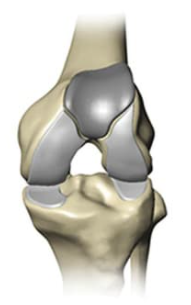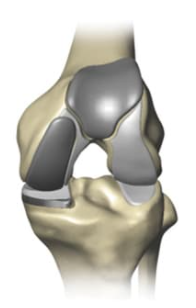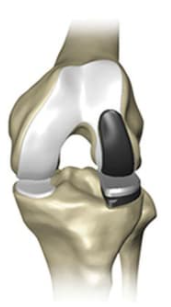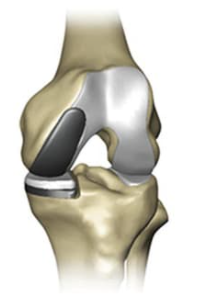Partial Knee Replacement with Mako Robotic-Arm Assisted Surgery
If you're suffering from pain caused by early- to midstage osteoarthritis and haven’t experienced adequate relief with conservative treatment options, you may be a candidate for Mako Partial Knee replacement. Schedule an appointment with one of our orthopedic surgeons to discuss which knee replacement procedure would be best option for you.
Partial Knee Replacement
In a partial knee replacement, only the damaged area of the knee joint is replaced, which may help minimize trauma to healthy bone and tissue. Depending on where the arthritis affects your knee, your may have an implant inserted in any of the following areas:
Patellofemoral
(Top area)

Biocompartmental
(Two areas)

Unicondylar
(One area)
In a unicondylar knee replacement, only one area (or compartment) of the joint is replaced.


How does Mako Technology work?
Personalized Surgical Plan
Before your surgery, your doctor will take a CT scan of your knee joint, which develops a 3D virtual model of your unique anatomy. This model helps your doctor see things they can’t typically see with an X-ray alone— things like your bone structure and disease severity.
Throughout the procedure, Mako SmartRobotics™ provides real-time data to your surgeon so they can continuously assess the movement and tension of your new joint and adjust your surgical plan if needed. Mako SmartRobotics™ helps your surgeon determine the desired size, placement and positioning of your implant.
Arthritic Bone Removal
In the operating room, your surgeon guides Mako’s robotic arm to remove arthritic bone and cartilage from the knee. AccuStop™ technology provides tactile resistance to help your surgeon stay within the boundaries defined in your surgical plan and accurately cut what’s planned for you, which could help protect your healthy bone.
Implant Placement and Range-of-motion Assessment
With the removal of the diseased bone, your implant is placed into the knee joint. Once your implant is successfully placed, it’s off to the recovery room to begin the journey towards strengthening your new joint.
Why Choose Mako SmartRobotics™?
In clinical studies, compared to manual surgery, Mako SmartRobotics™ for Partial Knee resulted in:
- More accurate implant placement compared to manual surgery, which may result in improved outcomes and functioning of the knee
- Less pain in the days and weeks following surgery
- A shorter hospital stay
- Quicker recovery, where 9 out of 10 patients were walking without an aid, such as a cane or walker, three weeks after surgery
- 97% of patients satisfied or very satisfied ten years after surgery






